I don't think they were entirely obsolete. The USN was onto something with its day-night doctrine: naval air by day and radar guided heavy guns by night. AA gunnery was behind the times though and it didn't really get to where it should have been, that is to defend against air attack (bomb and torpedo) until the Kamikaze threat (which was a more lethal threat than traditional air attack). Proximity fuses were a fantastic advantage though (they call that technology a "force multiplier" nowadays).Battleships were made obsolete on 12/07/1941, Naval air killed them all of them that came out to fight.
-
Please take a moment and update your account profile. If you have an updated account profile with basic information on why you are on Air Warriors it will help other people respond to your posts. How do you update your profile you ask?
Go here:
Edit Account Details and Profile
You are using an out of date browser. It may not display this or other websites correctly.
You should upgrade or use an alternative browser.
You should upgrade or use an alternative browser.
Ship Photo of the Day
- Thread starter Randy Daytona
- Start date
I don’t know about that. The same could be said for every naval vessel in WWII. The US lost only two BB’s in the war but 12 carriers, 10 cruisers, a whole bunch of DDs and DEs and some 52 submarines. They were all built to fight and in a tough fight everybody is going to suffer a bit. Obviously technology has rendered the classic battleship “design” obsolete, but I imagine the fire-power (in a modern version) could be placed in a different hull type.Battleships were made obsolete on 12/07/1941, Naval air killed them all of them that came out to fight.
VT fuse + radar directionI don't think they were entirely obsolete. The USN was onto something with its day-night doctrine: naval air by day and radar guided heavy guns by night. AA gunnery was behind the times though and it didn't really get to where it should have been, that is to defend against air attack (bomb and torpedo) until the Kamikaze threat (which was a more lethal threat than traditional air attack). Proximity fuses were a fantastic advantage though (they call that technology a "force multiplier" nowadays).
Well, Musashi might be a good look at the math example. She was stopped by a torpedo but not sunk. Later a 500 lb bomb broke through two decks and shattered an engine room allowing eleven more torpedo hits and four 1000 lb anti-ship bombs to hit her along with nine more bombs and a bunch of aerial rockets.
If we discounted the torpedo hits and then lightened the heavy bomb hits (the Dauntless couldn’t carry the heavy AP bombs) I’d say it couldn’t be done with the available scout-dive-bomber squadrons in the area. VT-8 had Avengers on Guadalcanal and they could carry the heavier bombs...would they be enough?
That's kinda what I was getting at. Correct me if I am wrong, but at the time of the 2nd Naval Battle of Guadalcanal, the US was down to 1 operational fleet carrier in the Pacific (Enterprise). Saratoga was at Pearl Harbor repairing torpedo damage until 12 Nov 1942, Wasp had been sunk in Sept 1942, Hornet sunk in Oct 1942 and Essex did not reach the Pacific until the summer of 1943 so for about a 6 month period, the US was down to 1 or 2 carriers in the Pacific (+ Henderson Field), with torpedoes that were borderline useless and shipborne dive bombers that couldn't carry heavy AP loads - seems like an opportune time to use the most powerful battleships in the world. If, and I say again if, the IJN had benched the Kirishima, Hiei and some of the lesser ships to find fuel for the Yamato and Musashi, I wonder how the campaign would have turned out. The odds were never going to get any better for the IJN.
Thought this article was pretty good discussing the effectiveness of anti-aircraft fire.
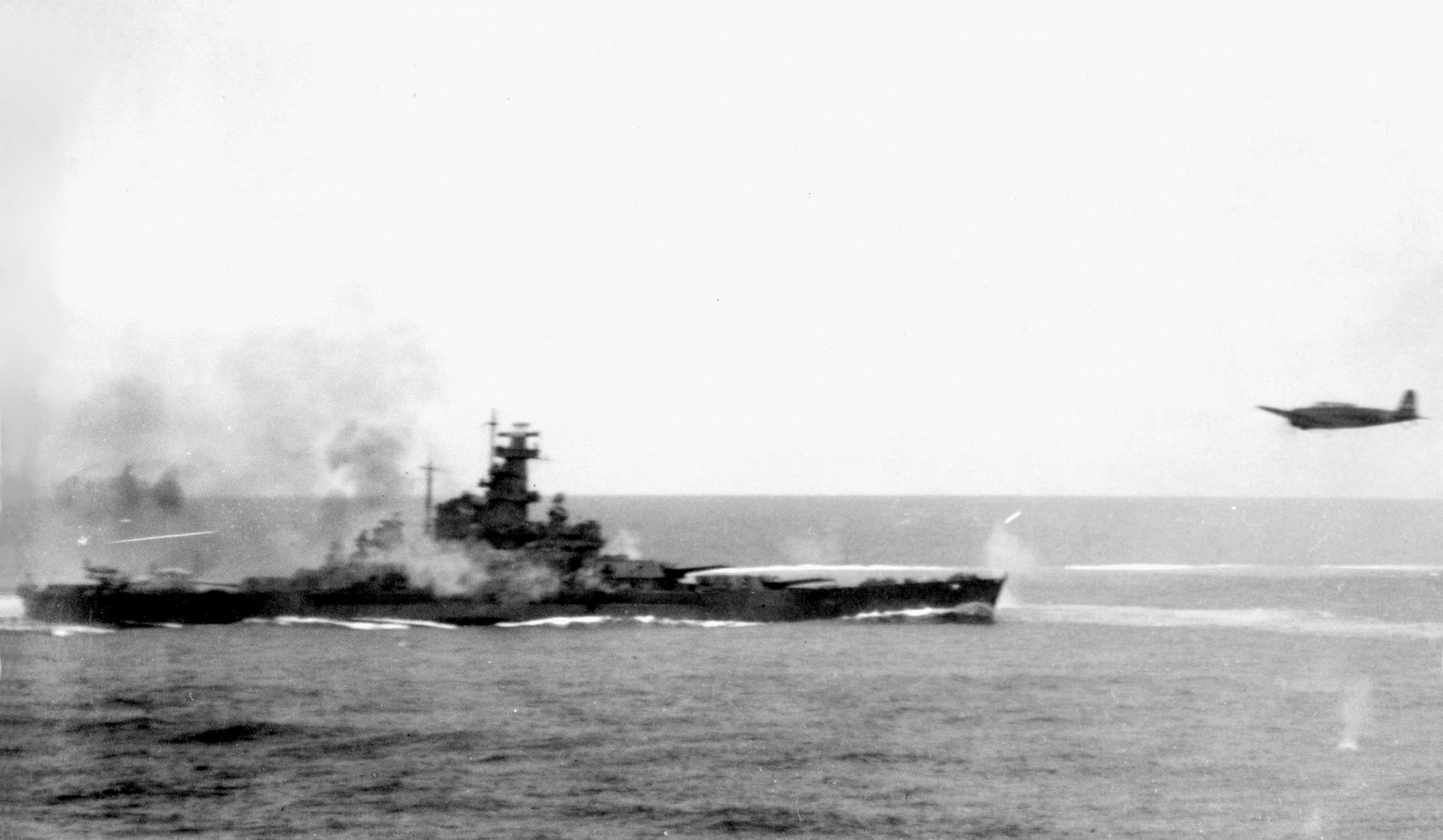
AAA Umbrella vs Rain of Bombs - Naval Anti-Aircraft vs Aircraft in World War II
During World War II, aircraft are depicted as being the prime defense against other aircraft. However, was naval anti-aircraft firepower just as effective?
 www.navygeneralboard.com
www.navygeneralboard.com
It likely was the best time to break them out. After Midway the Japanese seemed too anxious to preserve their fleet. Even late in the war when they launched the wild Sho attacks part of the plan involved at least one admiral who ran away to save some boats for “another day.”That's kinda what I was getting at. Correct me if I am wrong, but at the time of the 2nd Naval Battle of Guadalcanal, the US was down to 1 operational fleet carrier in the Pacific (Enterprise). Saratoga was at Pearl Harbor repairing torpedo damage until 12 Nov 1942, Wasp had been sunk in Sept 1942, Hornet sunk in Oct 1942 and Essex did not reach the Pacific until the summer of 1943 so for about a 6 month period, the US was down to 1 or 2 carriers in the Pacific (+ Henderson Field), with torpedoes that were borderline useless and shipborne dive bombers that couldn't carry heavy AP loads - seems like an opportune time to use the most powerful battleships in the world. If, and I say again if, the IJN had benched the Kirishima, Hiei and some of the lesser ships to find fuel for the Yamato and Musashi, I wonder how the campaign would have turned out. The odds were never going to get any better for the IJN.
Thought this article was pretty good discussing the effectiveness of anti-aircraft fire.

AAA Umbrella vs Rain of Bombs - Naval Anti-Aircraft vs Aircraft in World War II
During World War II, aircraft are depicted as being the prime defense against other aircraft. However, was naval anti-aircraft firepower just as effective?www.navygeneralboard.com
That article is kind of all over the place and I don't agree with it's conclusion. If ship based AA was so good then why at the end of the war was the USN executing a crash program to the AW of the fleet to more effectively counter the kamikaze threat. This included the development of SAMs and increased AA firepower for ships with the replacement of the 40mm with a dual 3"/50cal system that could use a VT fuse. In addition, he says the airstrikes against Kuritas center force at leyte only sank the musashi when in fact the airstrikes damaged numerous ships and caused Kuritas to turn around until IJN HQ reminded him he was on a suicide mission and to turn back around. Had halsey acted on the Intel that center force had resumed its course towards leyte gulf additional air attacks would have followed and destroyed more of Center Force. The conclusion of the article should be something like "ships equipped with advanced AA and sufficient ammo were more effective against air attack then other less capable ships."That's kinda what I was getting at. Correct me if I am wrong, but at the time of the 2nd Naval Battle of Guadalcanal, the US was down to 1 operational fleet carrier in the Pacific (Enterprise). Saratoga was at Pearl Harbor repairing torpedo damage until 12 Nov 1942, Wasp had been sunk in Sept 1942, Hornet sunk in Oct 1942 and Essex did not reach the Pacific until the summer of 1943 so for about a 6 month period, the US was down to 1 or 2 carriers in the Pacific (+ Henderson Field), with torpedoes that were borderline useless and shipborne dive bombers that couldn't carry heavy AP loads - seems like an opportune time to use the most powerful battleships in the world. If, and I say again if, the IJN had benched the Kirishima, Hiei and some of the lesser ships to find fuel for the Yamato and Musashi, I wonder how the campaign would have turned out. The odds were never going to get any better for the IJN.
Thought this article was pretty good discussing the effectiveness of anti-aircraft fire.

AAA Umbrella vs Rain of Bombs - Naval Anti-Aircraft vs Aircraft in World War II
During World War II, aircraft are depicted as being the prime defense against other aircraft. However, was naval anti-aircraft firepower just as effective?www.navygeneralboard.com
I agree that the best time to use the Yamato class would have been in SOPAC but I'm not sure what you mean by "no AP bombs." Henderson had TBMs and SDBs (and eventually F4Us) that were more than capable of carrying AP bombs. Had a Yamato class made a sortie I imagine it would have been set upon by every airplane on henderson, on a carrier, and within the 5th AF. In addition it's passage would have been harried by PT boats, DDs, CL/CA with BBs equipped with radar directed 16" guns at the end of Savo. The Japanese tended to send in their forces piecemeal in SOPAC so I doubt they would have sent both Yamatos. At the end of the day none of the Japanese BB sorties did anything to change the strategic situation at Guadalcanal. They certainly made the infantry miserable but semi nightly BB bombardments weren't going to dislodge the Marines. If the first USN BBs didn't sink the Yamato I'm sure USN would have reprioritized fuel and sent in more. The end of this story is still that the USN wins at Guadalcanal and that at least one Yamato ends up in Ironbottom Sound.
The US lost only two BB’s in the war but 12 carriers, 10 cruisers, a whole bunch of DDs and DEs and some 52 submarines.
The irony is that while the Japanese were much better at night fighting the two times USN and IJN battleships met in battle it was at night and the Japanese lost both times, the first time while they still had largely well-trained pre-war crews. The Washington's destruction of the Kirishima is fascinating to me, one that happened at the height of Japan's night fighting prowess while the USN was still learning the really hard way.
In addition, he says the airstrikes against Kuritas center force at leyte only sank the musashi when in fact the airstrikes damaged numerous ships and caused Kuritas to turn around until IJN HQ reminded him he was on a suicide mission and to turn back around.
I just read the part of Twilight of the Gods covering Kurita's turns his decision to turn around twice and and IIRC the book makes it clear that Kurita's decision to turn back around was his and not spurred by HQ.
I also just read it and interpreted that passage differently. I'll have to go reread.The irony is that while the Japanese were much better at night fighting the two times USN and IJN battleships met in battle it was at night and the Japanese lost both times, the first time while they still had largely well-trained pre-war crews. The Washington's destruction of the Kirishima is fascinating to me, one that happened at the height of Japan's night fighting prowess while the USN was still learning the really hard way.
I just read the part of Twilight of the Gods covering Kurita's turns his decision to turn around twice and and IIRC the book makes it clear that Kurita's decision to turn back around was his and not spurred by HQ.
I also just read it and interpreted that passage differently. I'll have to go reread.
As will I apparently!
Yep, my mis-read. Kuritas turned away and told his boss but after not hearing anything he decided to return to the attack. His boss had tried to tell him to continue with the attack but that the message had been delayed in being received by Kurita. So yes, Kurita made up his own mind but if he had chosen retreat he would been ordered back.As will I apparently!
USS Guam (CB-2). A "Large" cruiser of the Alaska class, some have compared it to a battlecruiser. Essentially a scaled up heavy cruiser, she packed a newly designed and powerful 12" rifles in the standard 3x3 layout. The downside was typical cruiser protection, especially lacking significant torpedo defenses. The secondary 5"/38 calibre twin turrets maintained the standard configuration of superfiring over the main turrets as well as on the beams. Interesting that there was an Iowa Improvement Plan to move the 5" battery on the battleships to the same superfiring scheme.
For comparison:
The Baltimore class heavy cruisers were 673 ft long, displaced 17,000+ tons at full load and had nine 8"/50 calibre rifles launching 335 lb shells
The Alaska class large cruiser were 808 ft long, displaced 34,000+ tons at full load and had nine 12"/50 calibre rifles pushing 1,140 lb shells
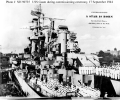
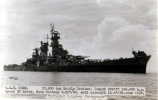
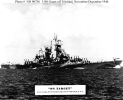
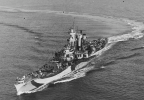
For comparison:
The Baltimore class heavy cruisers were 673 ft long, displaced 17,000+ tons at full load and had nine 8"/50 calibre rifles launching 335 lb shells
The Alaska class large cruiser were 808 ft long, displaced 34,000+ tons at full load and had nine 12"/50 calibre rifles pushing 1,140 lb shells




Last edited:
USS Guam (CB-2). A "Large" cruiser of the Alaska class, some have compared it to a battlecruiser. Essentially a scaled up heavy cruiser, she packed a newly designed and powerful 12" rifles in the standard 3x3 layout. The downside was typical cruiser protection, especially lacking significant torpedo defenses. The secondary 5"/38 calibre twin turrets maintained the standard configuration of superfiring over the main turrets as well as on the beams. Interesting that there was an Iowa Improvement Plan to move the 5" battery on the battleships to the same superfiring scheme.
For comparison:
The Baltimore class heavy cruisers were 673 ft long, displaced 17,000+ tons at full load and had nine 8"/50 calibre rifles launching 335 lb shells
The Alaska class large cruiser were 808 ft long, displaced 34,000+ tons at full load and had nine 12"/50 calibre rifles pushing 1,140 lb shells
View attachment 29509
View attachment 29510
View attachment 29511
View attachment 29512
Why did they really not want to call the Alaska class a "battlecruiser"?
The sad thing is that she was only part of the fleet for less than 30 months! Imagine building a cruiser today and mothballing it 30 months later!Why did they really not want to call the Alaska class a "battlecruiser"?
Because battlecruisers as a concept where a political hot button that a lot people thought had a propensity to explode in battle.Why did they really not want to call the Alaska class a "battlecruiser"?
Why did they really not want to call the Alaska class a "battlecruiser"?
This guy gives a pretty good summary of the design philosophy and naming conventions. Specifically large cruiser (CB) or battle cruiser (CC) from the 13 minute mark on
